Altered Beast: History of Sega’s Mediocre Hit
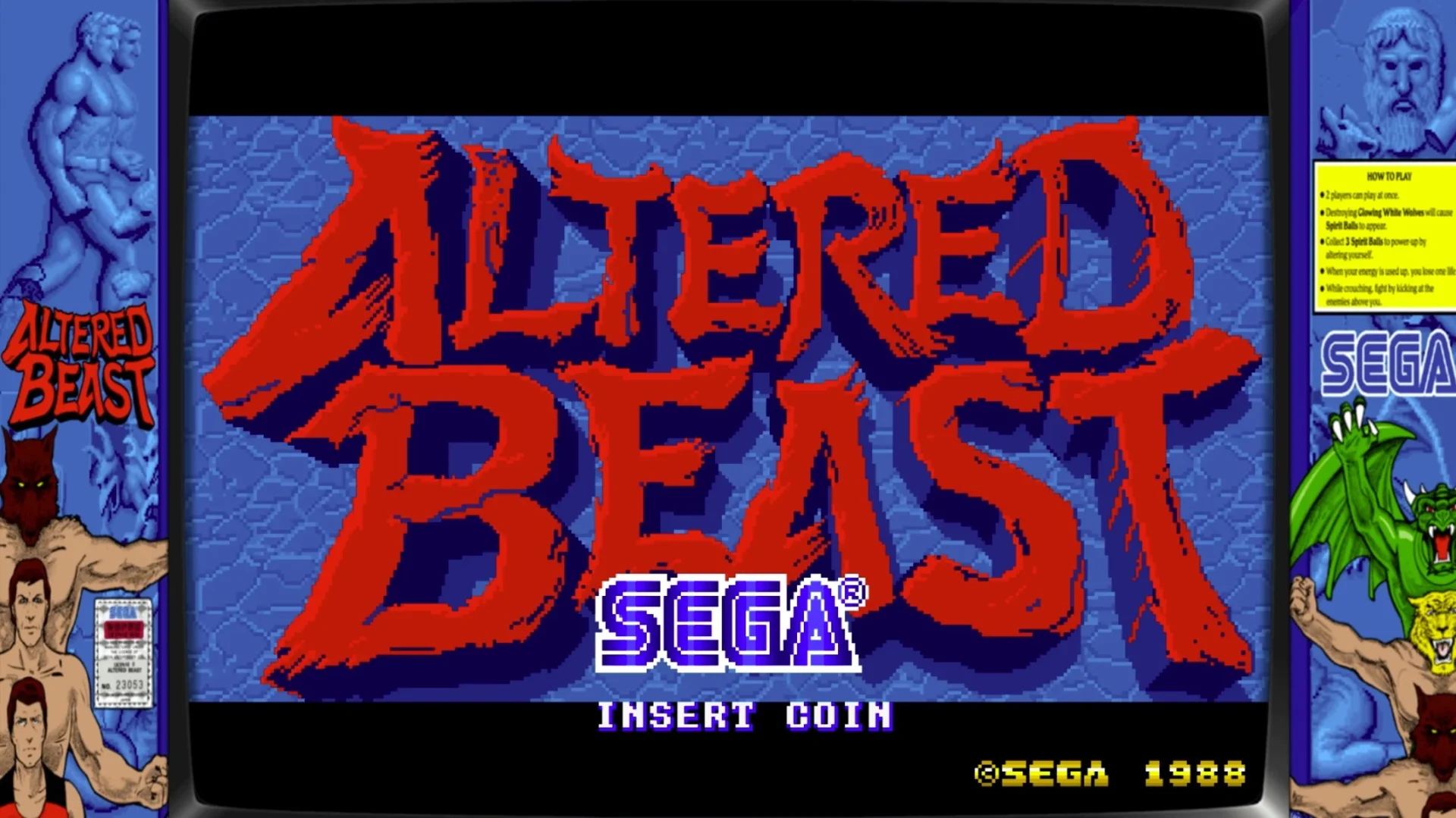
My family was visiting my uncle in Colorado when I first saw Altered Beast in the wild. It was at our hotel in the “arcade” (a small alcove with the Altered Beast cabinet and a claw machine). Two things stood out to me about it. First, was the amazing animations of the main character transforming into different animals – as a nine year old kid, that was pretty sweet. The second, was that the coin door had been left open by one of the hotel workers, so any time I put in a quarter, I could immediately retrieve it. That was even sweeter.
As a result, Altered Beast was the first arcade game I ever beat.
This Sega classic has its own story to tell. So here’s how one of Sega’s most well-known titles came to be.
“Rise from Your Grave!”
An avid gamer in the early arcade days, Makoto Uchida joined Sega in 1987 after being a play tester on After Burner.1
He moved up the ranks quickly at Sega and soon was pitching an idea he had based on Greek mythology. The idea was loosely based on the story of Persephone and Hades, where Hades tricks Persephone into coming to the Underworld, and the story of Lycaon, in which Zeus turns King Lycaon into a wolf for trying to serve the god human flesh (it’s a pretty gruesome story).
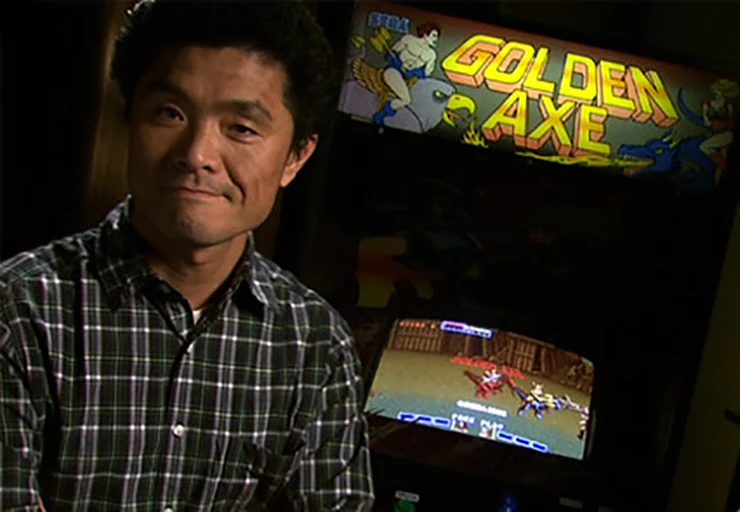
The idea didn’t come out of the blue though. Uchida was inspired by Michael Jackson’s “Thriller” music video as well as the movie The Howling. These two muses showed amazing transformations of people into monsters, and Uchida loved the concept.2 Shoehorn in some Greek mythology, and BOOM, he had a pitch for the executives at Sega. Except he changed the story to be Zeus raising two warriors from their grave to go rescue his daughter, Athena, who has been kidnapped by Neff, a made up demonic character.
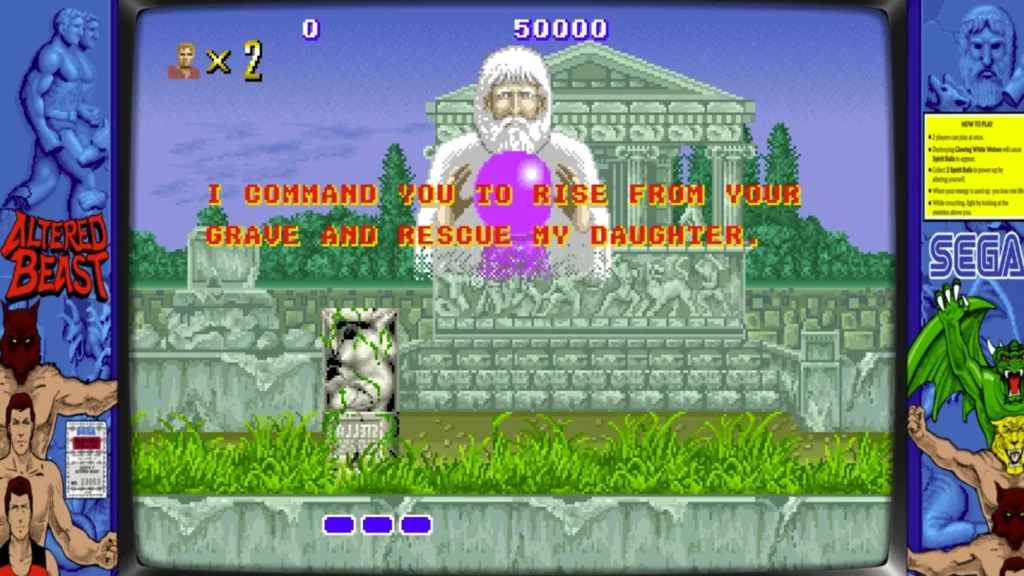
Sega gave him the green light, and Uchida was now set to create his first game. There was just one catch:
There was no development team ready.
Uchida waited six months before a team of developers was ready to take on the project. Luckily, he did use that time wisely, which we’ll see in a bit.
Altered Beast Development
Sega R&D1, which was Sega’s first R&D department, had a smaller team within the group that had worked on the arcade hit, Shinobi. They were known simply as Team Shinobi. Coming off of that hit, they were assigned to Uchida’s Altered Beast game.
For Uchida, the excitement to create a brand new game for a major game studio got a reality check for when his idea had to become realized. “I didn’t know how to create the fun in the gameplay and struggled a lot.”2
Uchida would lean on his lead programmer, who had worked on Alex Kidd (but not Shinobi), to get the gameplay mechanics down. An initial idea for the game was to have pressure sensitive buttons that would allow players to adjust how they attacked. “We planned to use a button that had a sensor to detect the strength of the pressure for Altered Beast at the beginning,” Uchida would later say.
However, the company that patented the technology wouldn’t fulfill an order that was small enough for Sega’s new arcade machines. The revolutionary idea had to be scrapped.
The game was built on Sega’s System 16 arcade board, which had previously been used for Shinobi as well. The board pumped out a whopping 10 MHz worth of processing power, but that enabled it to handle large, smooth-flowing sprites on the screen. With that processing power, the team was able to add subtle details, such as limbs flying off of defeated enemies and the incredible transformation sequences.
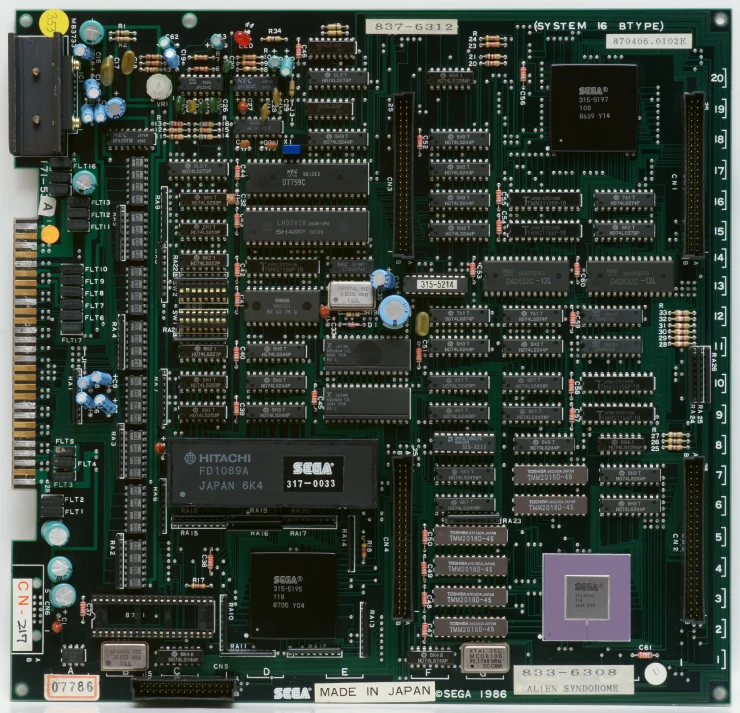
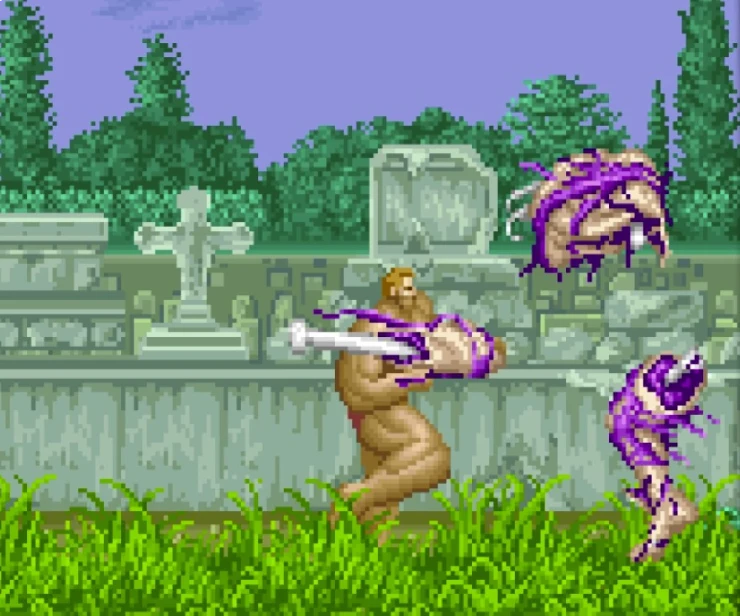
Let’s Talk About Those Transformations
In the six months that Uchida had to wait for a team of developers, he was able to work with Sega artists. It got off to a rocky start when he didn’t like any of the initial concepts for the game and ended up working directly with an artist to get his vision down on paper. The lead artist for the game took exception to this, and quit the project.3
But other artists stepped up, and did they ever deliver.
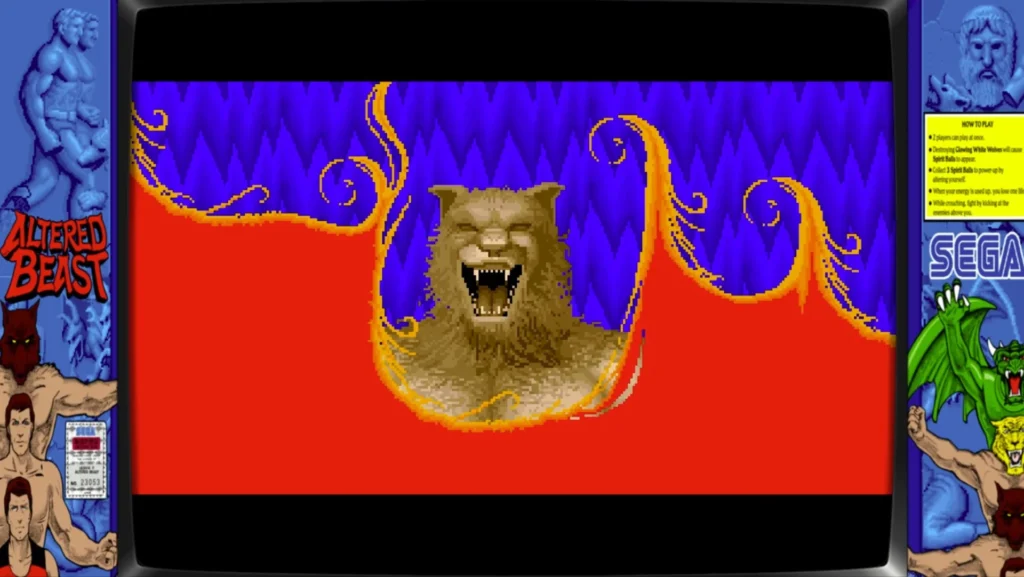
The core idea of Altered Beast came from Uchida’s love of how the transformations had been done in The Howling and Thriller. Wanting to bring that to life in a video game meant that the team needed to nail that detail.
The iconic transformation sequences “were achieved by asking the game’s (new) lead artist to focus just on this for an entire month,”2 Uchida would later recount. It was a month well spent. The transformations in the game became its calling card, and very few games had such amazing cinematics at the time.
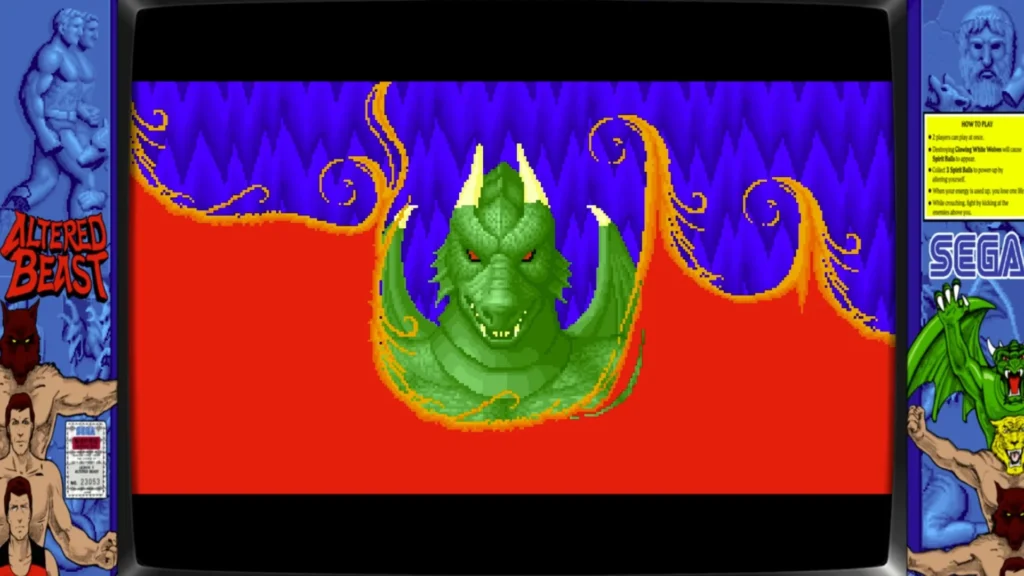
Losing More Control
The team had already moved on past the pressure sensitive buttons instead featured weaknesses and strengths on enemies as they got into the game. Doing a specific move would affect the enemy based on its characteristics. Unfortunately, this gameplay didn’t work in practice. It became overly complex and at the last minute, the entire mechanic was removed from the game. Huge amounts of animations and moves got cut. Uchida’s ultimate vision for the game was not coming to life.
Instead, the character was given basic movements, a punch, kick, ability to kneel, and jump. It was a long way from what Uchida and the Shinobi Team had wanted to do first with the pressure sensitive buttons, and then with the concepts of strengths and weaknesses. In Uchida’s own words, “The complexity of the game was decreased.”2
The result was a stiff, shallow feeling game that got old quickly. It was a flaw that kept the game from truly becoming great.
The Launch of Altered Beast

Altered Beast launched in Japan in June 1988, but it was immediately clear that it wasn’t popular. On the heals of the superior gameplay of Shinobi, Altered Beast didn’t pull in the Japanese market. It was inferior in controls, gameplay and story.
Reviews for the game were mixed. Commodore User magazine summed it up well:
“With very pretty graphics and perfectly adequate sound to boot, it’s undoubtedly a quality coin-op. My one major quibble would be that once you’ve mastered the knack of getting through one level, you’re not likely to be confounded by the rest.”6
However, that didn’t stop it from succeeding in another market: America.
Americans, like nine year old me, were enamored with the visuals of the game. Not only the transformations, but the myriad of enemies and incredible bosses that could fill up nearly half of the screen. Severed heads would fly from the sky and chomp down on you. Eyeballs would fly from the boss and look to end your campaign. For Americans, it was a game with visual excess, and if there’s one thing Americans like, it’s excess.
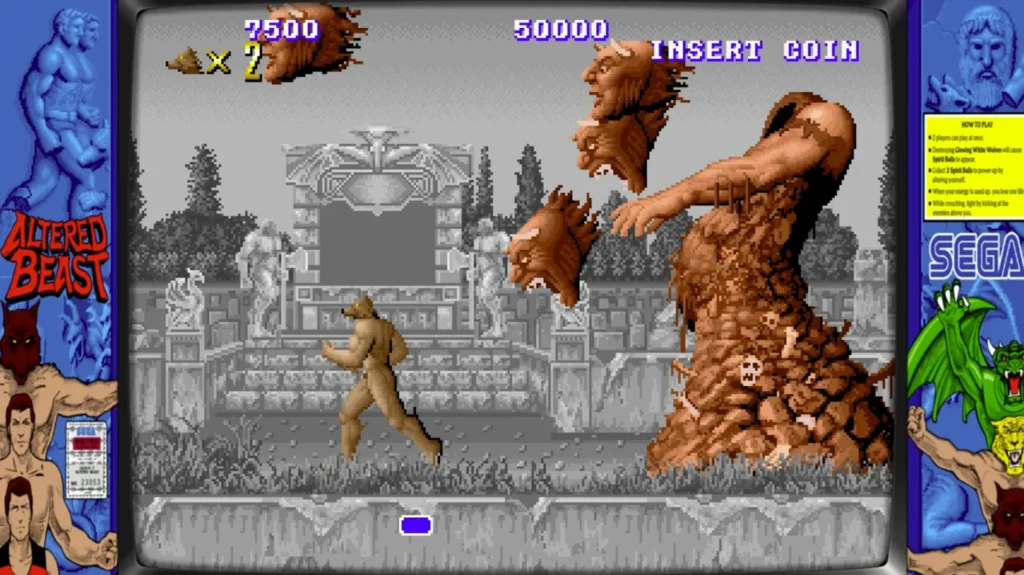
The arcade game would generate $26M in Japan and a whopping $53M in the United States in 1988.4
The American arcade launch was so successful that Sega would go on to bundle Altered Beast with its brand new Sega Mega Drive (Sega Genesis in North America) the following year.
Uchida’s Surprise Hit and Disappointment
Uchida didn’t know what to do with the news that Altered Beast would ship with the new Sega Genesis. “When I heard that Altered Beast would be bundled with all the Sega Genesis packages in North America I had no idea what to expect.”2 The port to from the arcade version to the console version saw few compromises. It looked and felt like the arcade version, which really demonstrated the power of the Genesis. Fans took note. Altered Beast and the newly launched Sega Genesis made it into nearly 500,000 North American homes in 1989 alone.5
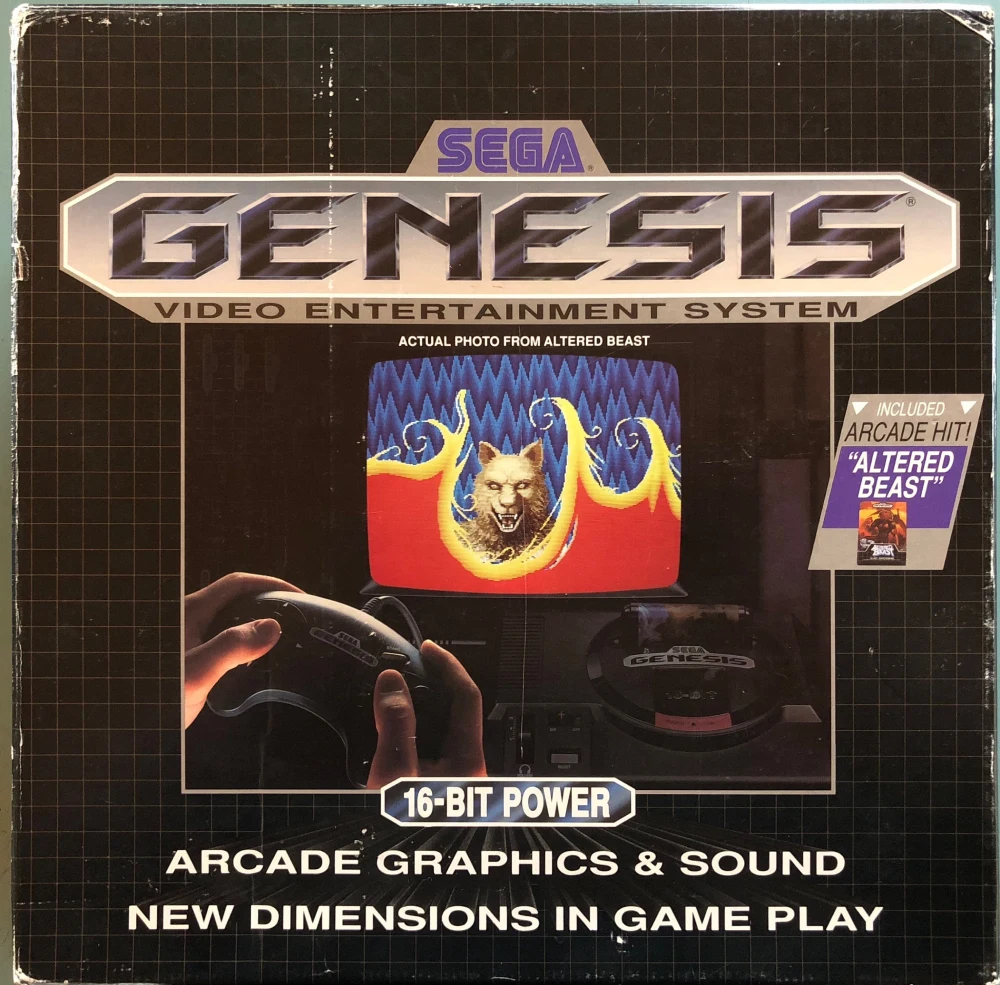
Unfortunately, the goal for that first year was to sell one million consoles in North America.7 The console port wasn’t pulling the numbers it needed.
Uchida waited for Sega to announce that the game would be bundled with the Japanese Mega Drive, but that never came to be. Instead, he flew to America three years later. Excited to see his game packaged with the Genesis, he went to a store but, once again, faced disappointment.
“There was nothing but the Sonic The Hedgehog bundle available! So I was never able to see it.”2
Altered Beast‘s Legacy
Altered Beast hadn’t been able to buoy the Sega Genesis, and in 1991, it was replaced as the bundled in game by Sonic the Hedgehog. In the end, it was the right decision by Sega. Sonic became the face of Sega moving forward.
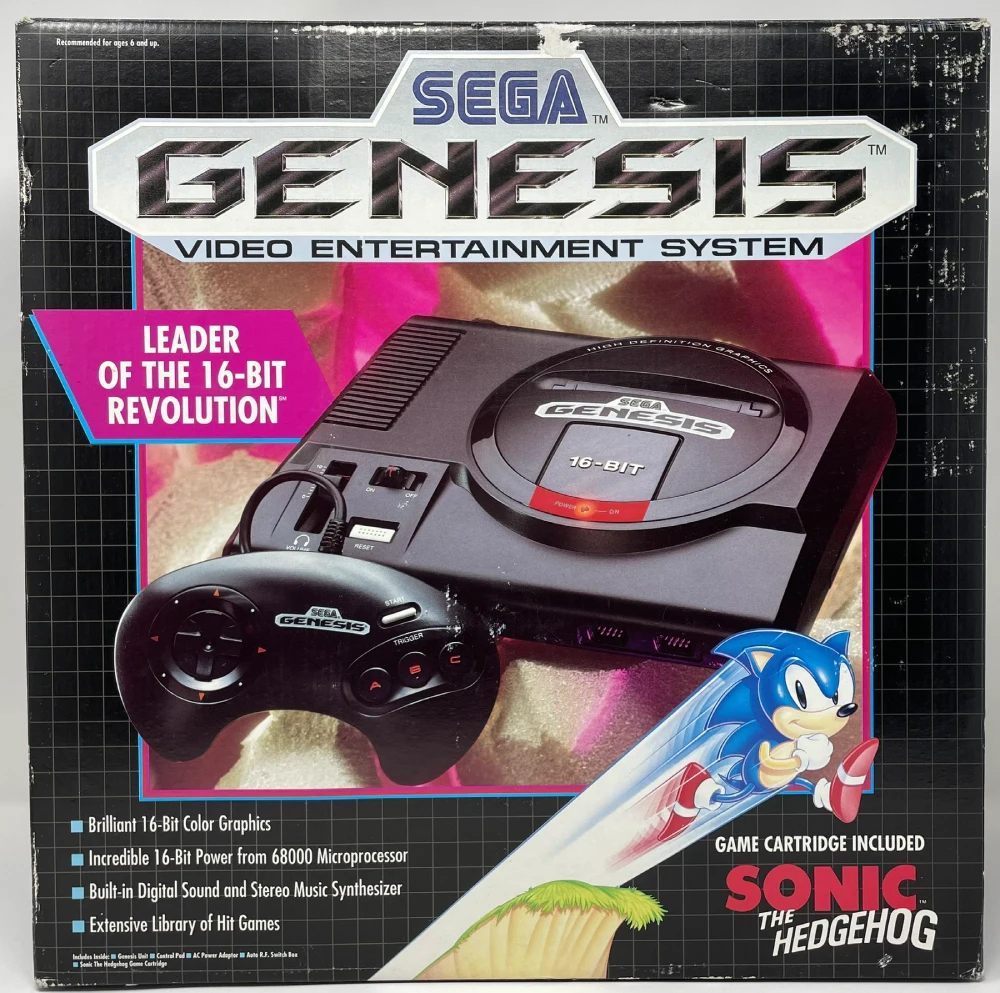
Despite its failures, Altered Beast still carries with it a legacy and fan following. The visuals in the game were great, and in 1988 they definitely turned heads at the arcade. After the port to the Genesis, it was also ported to many other consoles, with mixed results. The port to the Sega Master System (the predecessor to the Mega Drive/Genesis) was a complete mess and nearly unplayable. But the many ports to other consoles gave it a broader reach to more and more fans.
Looking back, Altered Beast was a key differentiator for the Sega Genesis and holds a special place in the history of the system. And for Uchida, it was the launch pad for his career, which went on to bigger and better projects. His follow-up game would include many of the mechanics he wanted in Altered Beast and then some. The game would again be inspired from movies, specifically Conan the Barbarian. Uchida and Shinobi Team would launch the arcade and console hit, Golden Axe in 1989.
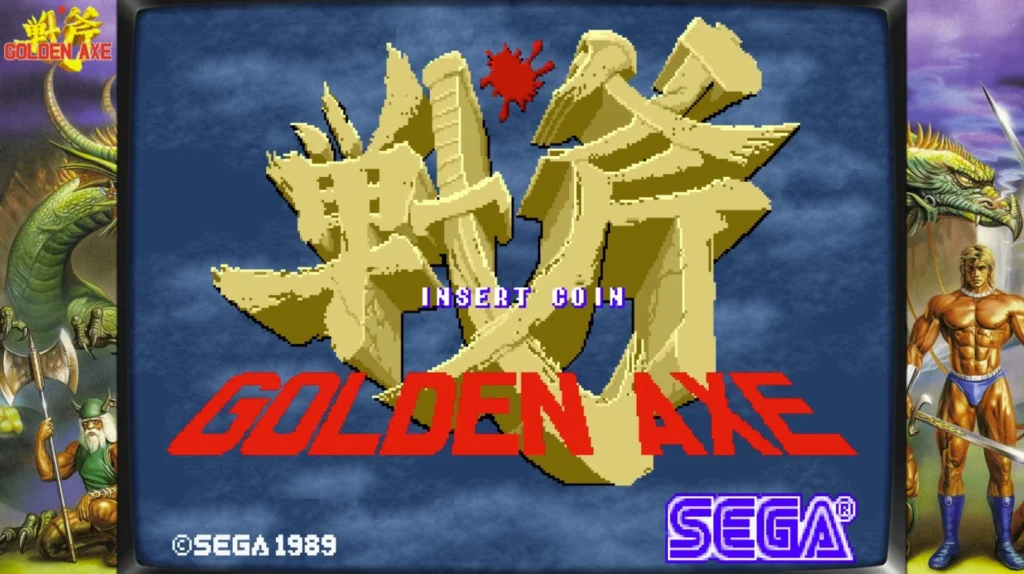
Golden Axe built on everything that Altered Beast had started, with giant set pieces, well animated characters, and full-screen cinematic scenes when a player would use their special magic abilities. But without Altered Beast before it, Golden Axe may not have been the success it was.
For me, the nine year old kid who pumped in about $10 worth of the same quarter into an open arcade cabinet, Altered Beast was amazing. I’m assuming it was that way for many kids of my generation. And while the game didn’t age well, it’s still worthy of its legacy as an arcade classic.
References:

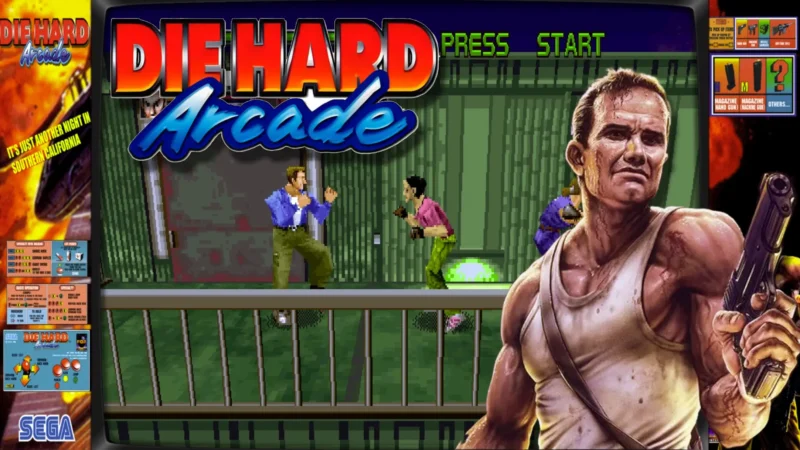
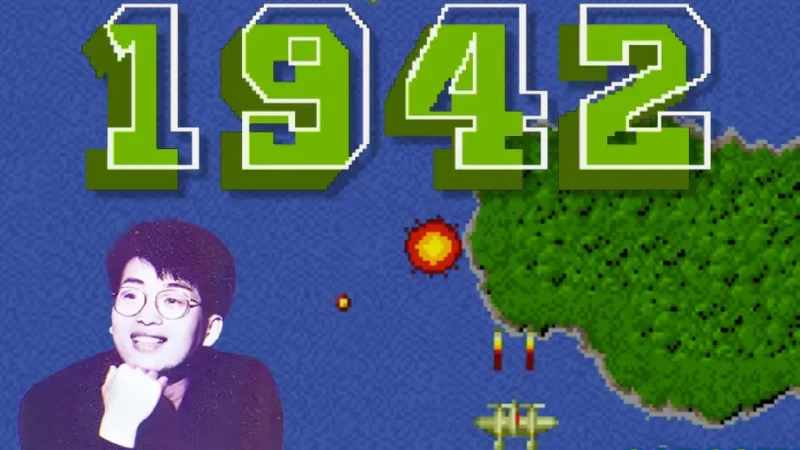
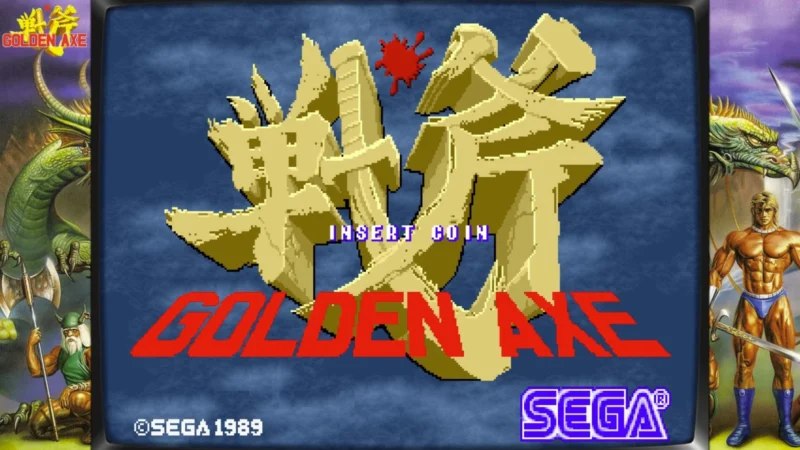

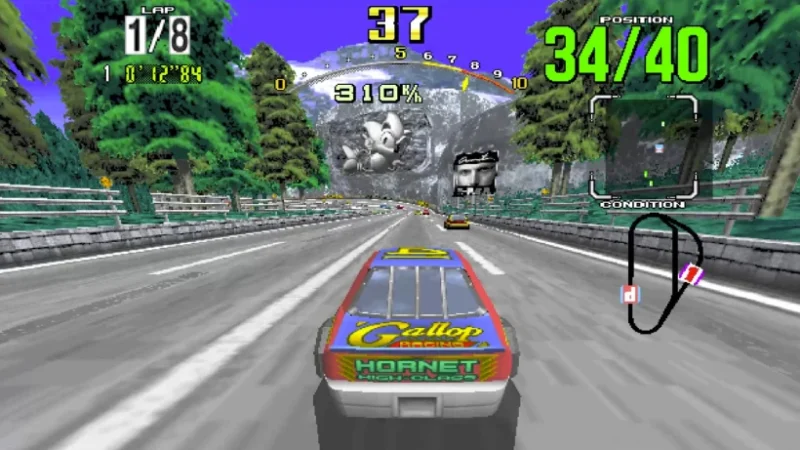
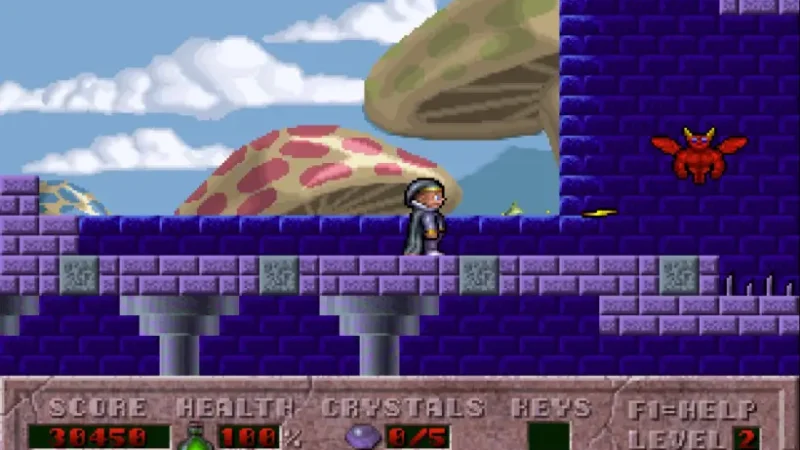
2 thoughts on “Altered Beast: History of Sega’s Mediocre Hit”